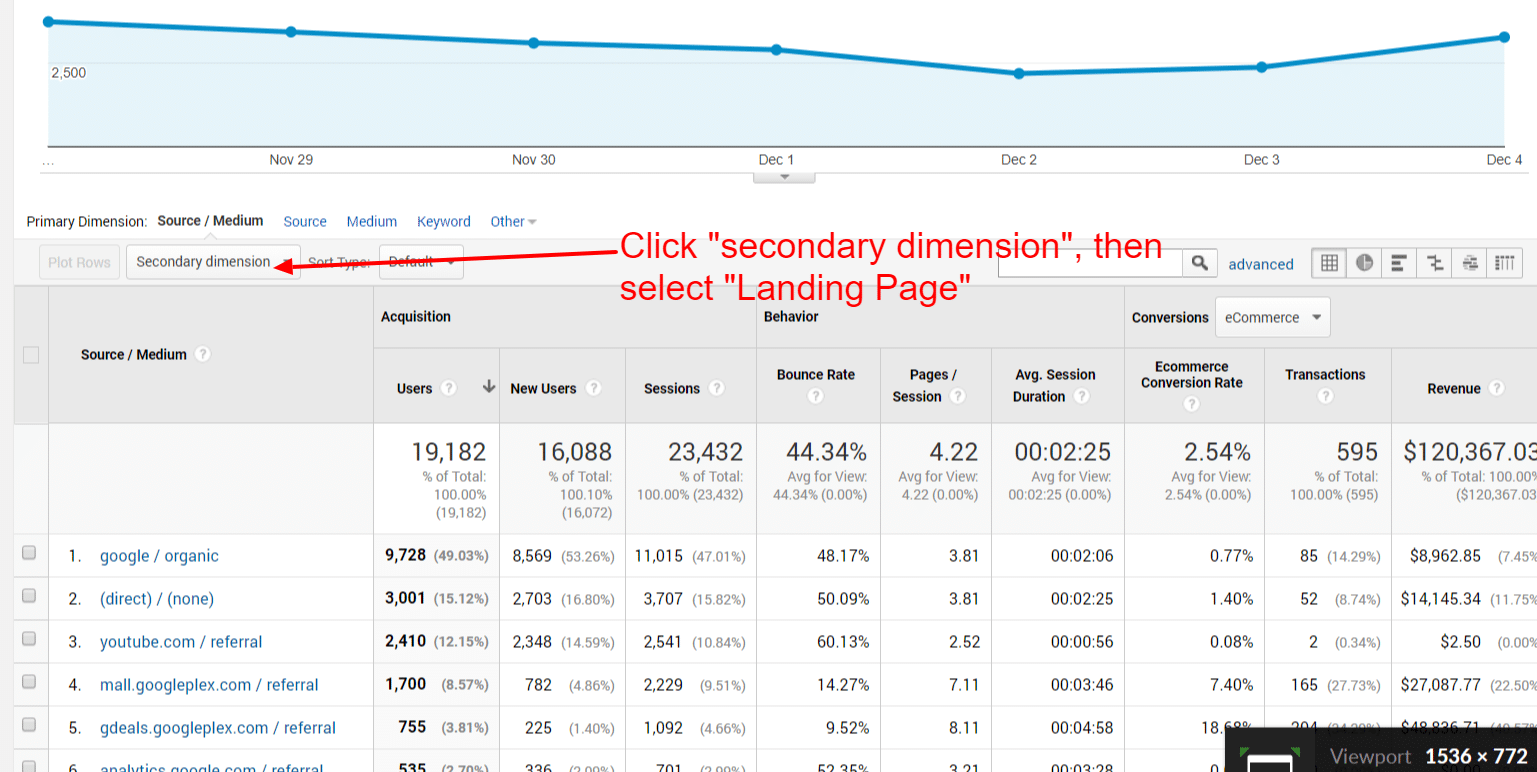Step-by-Step Guide: Leveraging Secondary Dimension in Google Analytics
Step-by-Step Guide: Leveraging Secondary Dimension in Google Analytics
Blog Article
Unlock Deeper Insights With Additional Measurement in Google Analytics
With the huge stretch of information offered in Google Analytics, the usage of secondary dimensions can dramatically improve your analytical abilities. These additional layers of information offer a nuanced perspective that can brighten elaborate information within your main metrics. By strategically incorporating additional measurements right into your evaluation, you can unearth beneficial insights that may otherwise continue to be undiscovered. The capability to analyze and dissect customer habits with better precision opens a world of opportunities for improving and maximizing methods performance.
Comprehending Key Vs. Additional Measurements
When analyzing information in Google Analytics, it is vital to differentiate between additional and primary dimensions to gain deeper understandings into user habits. Primary measurements are the primary categories through which you can view your information, such as tool, source/medium, or touchdown page. These dimensions give the essential framework for arranging and comprehending your information. On the various other hand, second measurements enable you to additional study your key measurement information. By adding a secondary dimension, you can layer on additional information to your primary dimension, allowing a much more granular evaluation. If your primary dimension is the source/medium via which individuals got here on your website, adding a secondary dimension like geographical location can expose where those users are situated geographically. This included layer of info can aid you recognize trends, patterns, or anomalies that may not have actually been evident when looking at the main dimension alone. Leveraging both key and additional dimensions in Google Analytics is vital for comprehensive data evaluation and educated decision-making.
Utilizing Additional Dimensions Properly
Efficiently making use of additional measurements in Google Analytics boosts the depth and granularity of data evaluation, offering important insights right into customer habits and fads. By incorporating secondary dimensions together with main dimensions, analysts and marketing experts can delve much deeper right into the specifics of user communications on their internet sites. Additional dimensions enable customers to segment and filter primary dimension data even more, supplying a more comprehensive view of user demographics, interactions, and habits. This can be specifically useful when trying to understand the impact of particular variables on user engagement, such as the internet browsers or tools they are making use of, the resources of their website traffic, or their geographic areas.
Moreover, second measurements allow customers to contrast and contrast different data factors within a single report, helping with a more thorough analysis of customer behavior patterns. By leveraging additional measurements successfully, businesses can reveal covert understandings, enhance their marketing techniques, and improve the total user experience on their websites.
Exploring Usual Secondary Dimension Mixes
To additionally analyze user actions and fads in Google Analytics, it is important to explore common mixes of second dimensions. Some common second measurement combinations that supply important understandings include evaluating web traffic sources with customer places to recognize where website visitors are coming from geographically and just how they located the website. Taking a look at user behavior metrics with second measurements such as passions or demographics can assist in targeting details target market sectors more efficiently.
Applying Second Measurement in Customized Reports
Utilizing additional measurements in customized reports permits a more comprehensive evaluation of information in Google Analytics, enhancing the deepness of insights acquired. When creating personalized reports in Google Analytics, integrating second dimensions can supply a more detailed view of how numerous measurements engage with each various other. This attribute makes it possible for individuals to dive much deeper right into their information and reveal useful relationships that might not be right away evident.
By using additional dimensions in personalized reports, individuals can get a better understanding of their website or app traffic. For instance, incorporating the main measurement of "source/medium" with the second measurement of "landing web page" can disclose which landing pages are executing ideal for website traffic originating from details resources. This insight can aid marketing professionals enhance their projects and enhance total conversion prices.

Enhancing Data Visualization With Additional Measurement
When checking out information in Google Analytics custom-made reports, integrating secondary measurements not just offers a more in-depth analysis however also boosts the visual representation of understandings with information visualization. By including a secondary measurement to your reports, you can enrich the method information is provided, making it easier to determine patterns, trends, and relationships within your site's performance metrics.
Additional measurements can help you segment your data further, permitting a much deeper read review understanding of customer habits and communications on your website. When attempting to isolate particular variables that may affect your site's performance., this improved level of granularity can be particularly helpful.

Conclusion
Finally, leveraging additional measurements in Google Analytics enables for a more thorough analysis of data, causing deeper understandings and even more informed decision-making. Secondary Dimension in Google Analytics. By adding additional layers of information to main data sets, experts and marketers can uncover concealed patterns, patterns, and connections that give a granular view of individual actions and communications. This boosted level of understanding makes it possible for optimization of campaigns and tailored methods for particular target market sections, eventually enhancing performance and conversion prices
On the other hand, additional dimensions permit you to more study your key dimension data. By including a secondary measurement, you can layer on added details to your main dimension, making it possible for a more granular analysis. If your key dimension is the source/medium via which users arrived on your website, adding an additional dimension like geographic location can disclose where those individuals are situated geographically. By incorporating second dimensions along with primary dimensions, online you could try here marketers and analysts can delve deeper into the specifics of user interactions on their web sites. Additional dimensions allow customers to section and filter key dimension data better, providing an extra thorough view of individual demographics, actions, and interactions.
Report this page